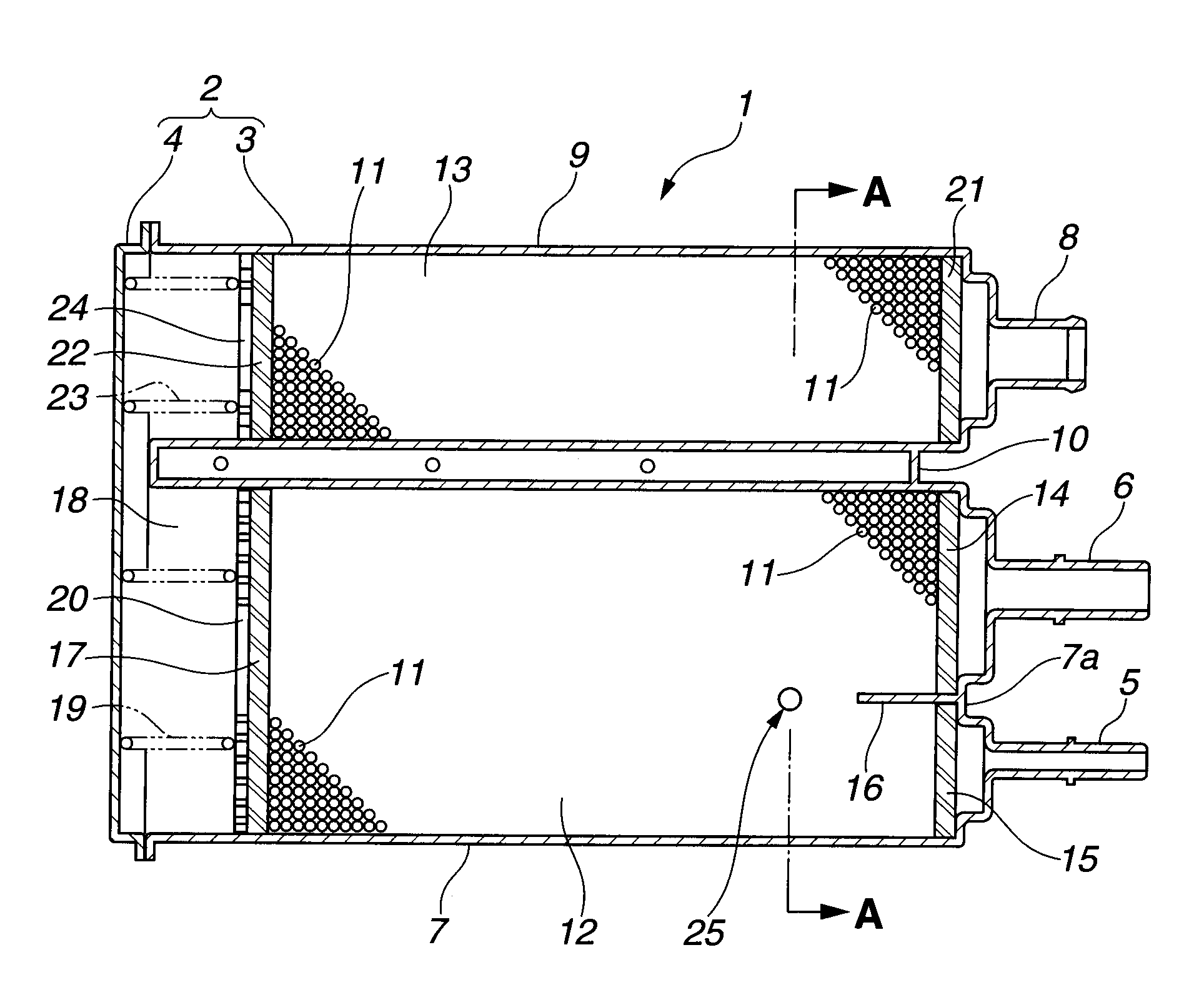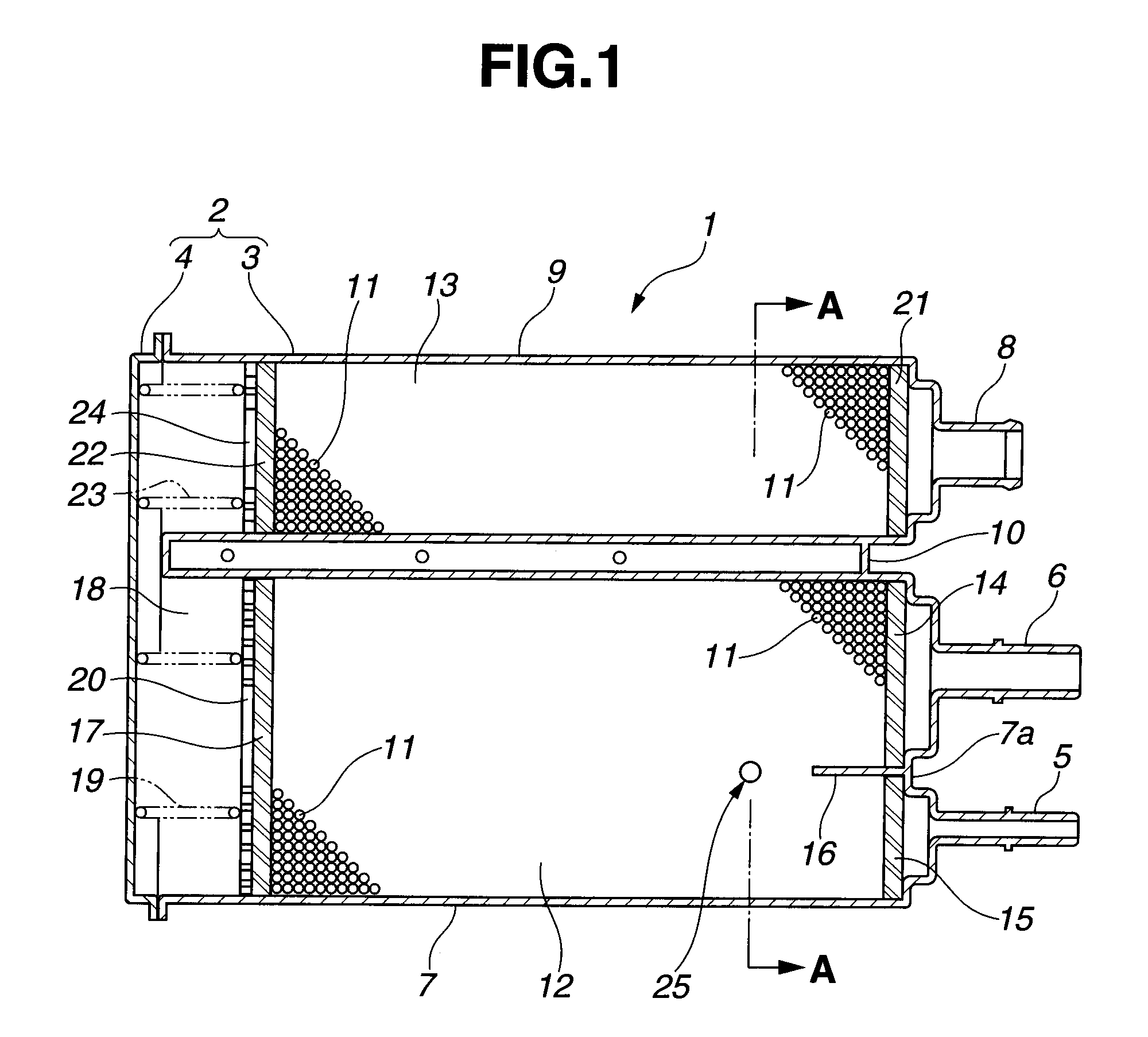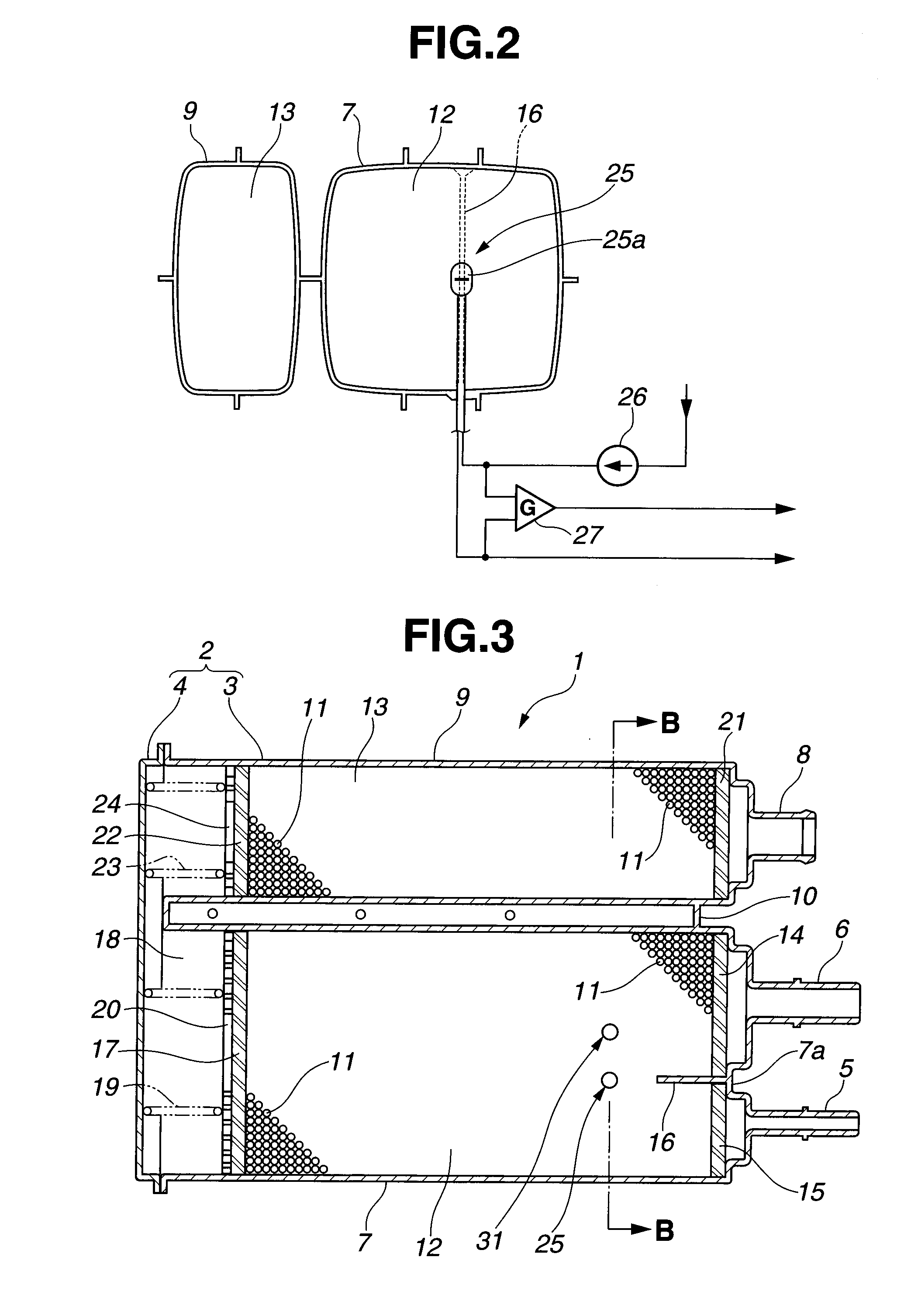Purge gas concentration estimation apparatus
a technology of concentration estimation and purge gas, which is applied in mechanical devices, machines/engines, instruments, etc., can solve the problems of response delay, and inability to accurately detect the amount of purge gas
- Summary
- Abstract
- Description
- Claims
- Application Information
AI Technical Summary
Benefits of technology
Problems solved by technology
Method used
Image
Examples
first embodiment
[0040]As explained above, in the first embodiment, by detecting the heat capacity of an inside of the casing 2, namely the heat capacity of the activated carbon 11, the HC adsorption amount of the activated carbon 11 can be directly detected. With this detection, by using the HC adsorption amount (adsorption amount of the evaporated fuel) of the activated carbon 11, which is detected through the current energization before the engine start, irrespective of the HC adsorption amount of the adsorbent, it is possible to instantly and accurately estimate the purge gas concentration that is the fuel concentration in the purge gas upon execution of the purge.
[0041]Further, by employing the hot-wire sensor 25, the HC adsorption amount in the canister 1 can be directly detected with a less expensive system.
[0042]Moreover, by placing the hot-wire sensor 25 near or close to the purge port 5 in the canister 1, i.e. at the position where the adsorption amount of the evaporated fuel is large in t...
second embodiment
[0049]In the second embodiment, although the temperature sensor 31 is positioned apart from the hot-wire sensor 25 at the predetermined distance, this predetermined distance means that the temperature sensor 31 is disposed apart from the hot-wire sensor 25 at such distance that the temperature sensor 31 is unaffected by an influence of heat (heat generation) of the hot-wire sensor 25. The predetermined distance could be properly set in accordance with a magnitude of the constant current supplied to the hot-wire sensor 25 and / or material of the heating part 25a.
[0050]Next, a third embodiment will be explained with reference to FIG. 5. The structure of the third embodiment is basically same as the second embodiment. However, as can be seen in FIG. 5, a hot-wire sensor 41 as a second heat capacity detection means or device is provided and positioned at the other side of the first filling chamber 12. In other words, the hot-wire sensor 41 is located at the other end side of the flow pa...
third embodiment
[0052]In the third embodiment, the detection value of the hot-wire sensor 25 is detected by the same detection circuit as FIG. 4, and the detection value of the hot-wire sensor 41 is detected by the same detection circuit as FIG. 2. In addition, regarding the method of detecting the purge gas concentration from the detection value of the hot-wire sensor 41, it is the same as the above-mentioned method of estimating the purge gas concentration through the hot-wire sensor 25.
[0053]Furthermore, as described in each embodiment, when it becomes possible to accurately estimate the purge gas concentration upon execution of the purge before the engine start, the purge of the canister 1 can be executed without performing a so-called pre-purge (see FIG. 6. a related art requires the pre-purge for measurement of an exhaust air-fuel ratio and estimation of the purge gas concentration to determine a fuel injection quantity, whereas the present invention requires no pre-purge.). Therefore a purge...
PUM
 Login to View More
Login to View More Abstract
Description
Claims
Application Information
 Login to View More
Login to View More - R&D
- Intellectual Property
- Life Sciences
- Materials
- Tech Scout
- Unparalleled Data Quality
- Higher Quality Content
- 60% Fewer Hallucinations
Browse by: Latest US Patents, China's latest patents, Technical Efficacy Thesaurus, Application Domain, Technology Topic, Popular Technical Reports.
© 2025 PatSnap. All rights reserved.Legal|Privacy policy|Modern Slavery Act Transparency Statement|Sitemap|About US| Contact US: help@patsnap.com



